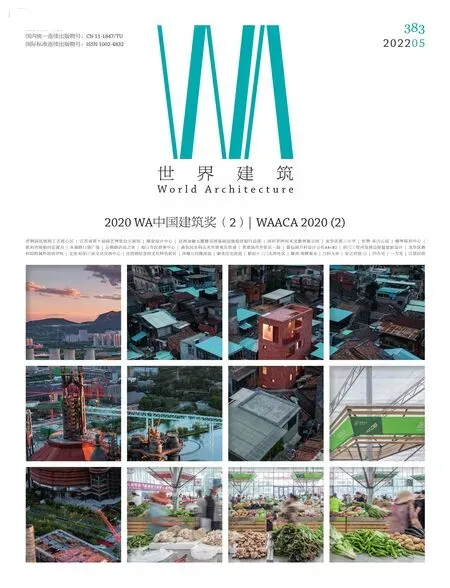江苏省第十届园艺博览会主展馆,扬州,江苏,中国
东南大学建筑学院,东南大学建筑设计研究院有限公司
客户:扬州园博投资发展有限公司
主创建筑师:王建国,葛明
设计团队:徐静,朱雷,韩重庆,陆伟东,程小武,李亮,孙小鸾,许轶,赵晋伟,王玲,章敏捷,王志东,丁惠明
建筑面积:14,281m2
设计时间:2016-2017
竣工时间:2018.10
摄影:侯博文
Client:Yangzhou Yuanbo Investment Development Co.,Ltd
Principal Architects:WANG Jianguo,GE Ming
Project Team:XU Jing,ZHU Lei,HAN Chongqing,LU Weidong,CHENG Xiaowu,LI Liang,SUN Xiaoluan,XU Yi,ZHAO Jinwe,WANG Ling,ZHANG Minjie,WANG Zhidong,DING Huiming
Floor Area:14,281 m2
Design Period:2016-2017
Completion Time:2018.10
Photos:HOU Bowen
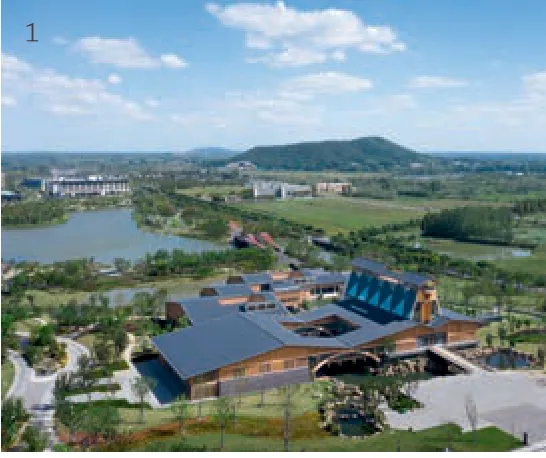
1 鸟瞰 Aerial view
第十届江苏省园博会于2018 年9 月在扬州仪征举办。园区场地地势平坦,依山傍水。主展馆坐落于入口展示区,是最主要的地标建筑和展览建筑,并在世园会期间作为中国馆使用。
山水格局和地域文化意象的表达
主展馆汲取扬州当地山水建筑和园林特色的文化意象,从清代袁耀《扬州东园图》中获得启发,以“别开林壑”之势表现扬州园林大开大合的格局之美,南入口以高耸的凤凰阁展厅开门见山,与科技展厅相连的桥屋下设溪流叠石,并延续至北侧汇成水面,形成内外山水相贯之景。
绿色建造示范和建筑持续利用
主展厅建筑部分采用现代木结构技术。主要木构件均由工厂加工生产、现场装配建造,不仅是一种绿色建造,符合节能环保要求,而且还有效提升了施工效率,解决了工期紧张的问题,对绿色设计和可持续发展起到积极示范作用。由于展馆在博览会后将被改造为精品酒店,设计同时兼顾了后续利用。
景观交融的展示序列
展厅从入口的集中空间到北侧转变为3 个精致合院,游人的观赏序列随层层叠落的水面依次展开。展厅与林壑交织的回游式路径使得建筑与景观、室内与室外充分融合。
评委评语
该建筑创新地采用了现代木结构体系,科技展厅为国内首个交叉张弦木梁结构,虹桥为拉杆拱形式的廊桥木结构;建筑同时是国内层高最大的木结构,建筑与结构融为一体,结构成就建筑之美。建筑化整为零,化解大的建筑体量,形成院落式布局,在承载现代功能的同时,积极传承中华建筑文脉,随物赋形,巧妙地通过对传统建筑的变形满足功能需求,并基本实现展览空间的自然通风,达到被动式节能的目标。建筑重视全生命周期的使用,对博览会结束后建筑的再利用给予了充分的考虑。
The 10 th Jiang su Horticu ltural Exposition was held in Yizheng,Yangzhou in September 2018.The Expo Park is located in Zaolinwan Ecological Park,with a flat site that is near the mountain and by the river,and the reserved construction area of the 2021 World Horticultural Exposition to the east.As the landmark building,the main exhibition pavilion is located at the entrance area of the Expo Park.
Expression of Landscape Layout and Image of Regional Culture Drawing
Inspired by the cultural imagery of the local landscape architecture and gardens in Yangzhou,and YUAN Yao's painting "East Garden of Yangzhou" from the Qing Dynasty,the main exhibition pavilion expresses the beauty of Yangzhou gardens with the image of "sudden view of forest ridges".The south entrance leads to the towering Phoenix Pavilion Exhibition Hall.A stream runs under the bridge house connected to the Science and Technology Exhibition Hall,and continues to the north where it merges into the water surface,creating a coherent landscape linking inside and outside.
Green Building Demonstration and Sustainable Utilisation of Buildings
The main pavilion adopts modern wood structure technology.The main components are manufactured by factories and assembled on site.It is not only a green construction,which meets the requirements of energy saving and environmental protection,but also effectively improves the constructionefficiency,solves the problem of tight construction period and plays a positive role in the demonstration of green design as well as sustainable development.Since the pavilion will be transformed into a boutique hotel after the Expo,the design considers both the rationality of its subsequent use.
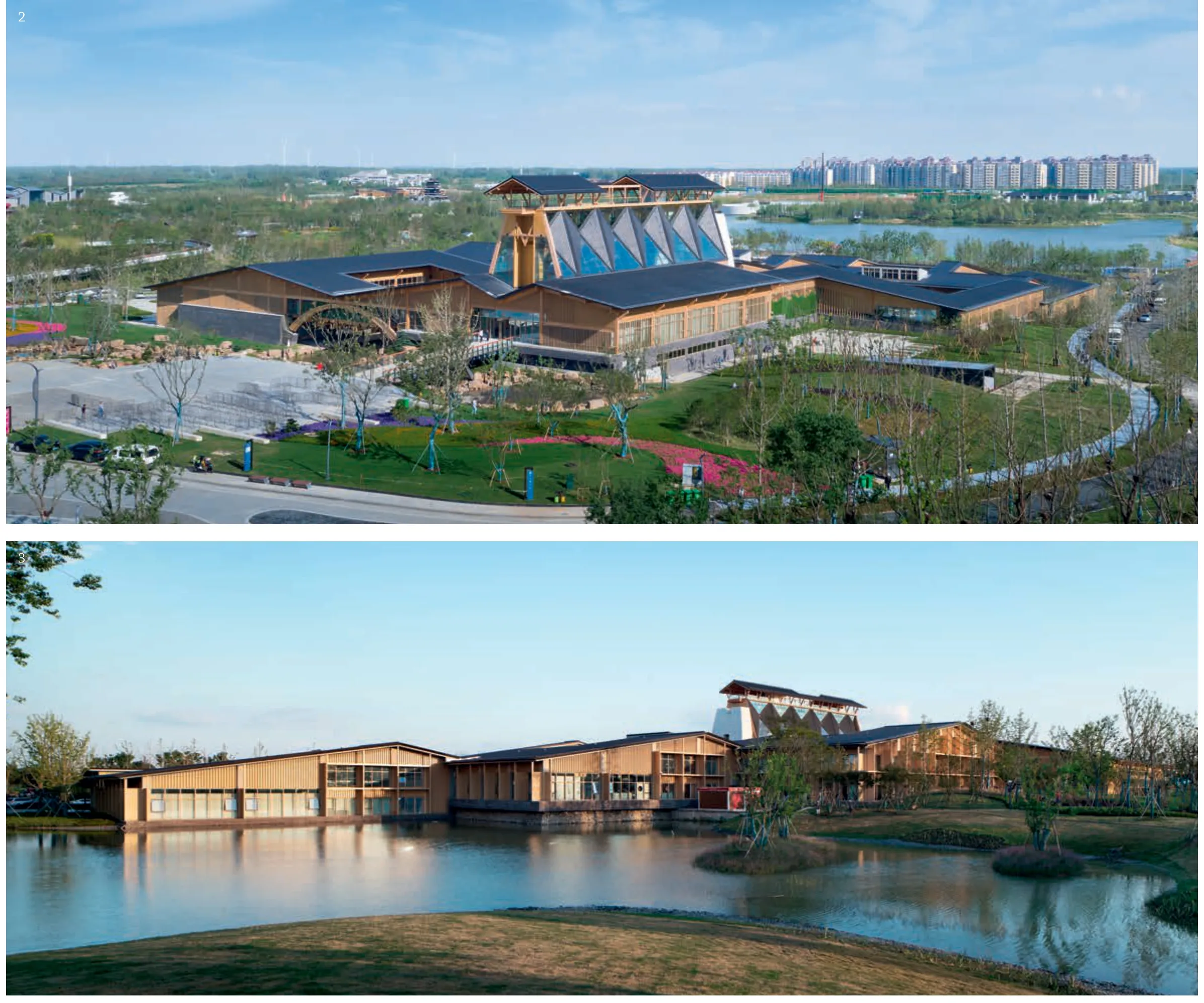
2.3 外景 Exterior views
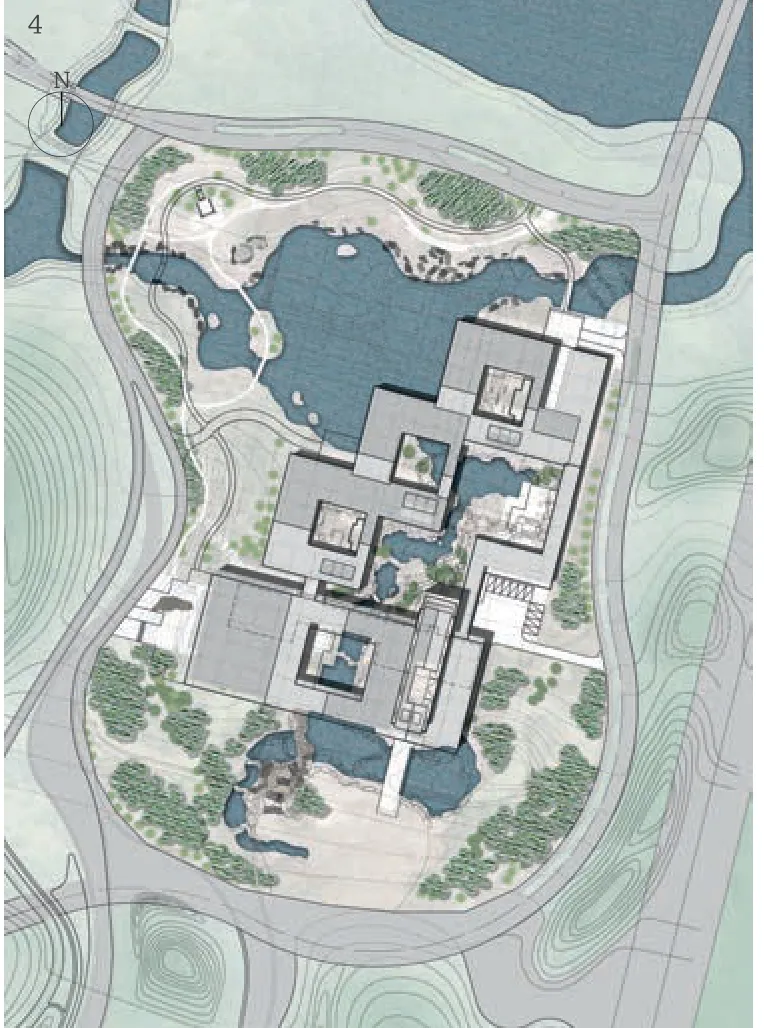
4 总平面 Site plan
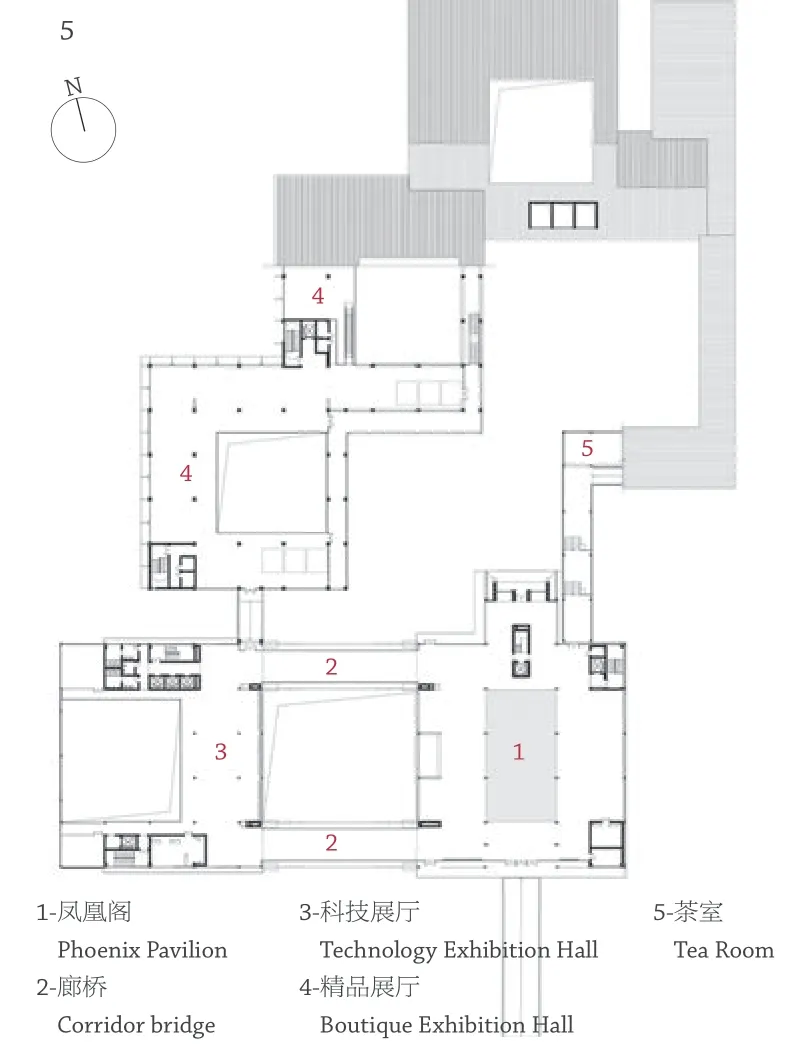
5 主入口层平面 Main entrance floor plan
Display Sequence Integrated with Landscape
From the entrance area to the north side,the exhibition halls are transformed into three exquisite courtyards.The viewing sequence for visitors unfolds with the falling water surface.The intertwined paths between the exhibition halls and the rocks and trees make the buildings and landscape,the indoor and the outdoor,fully integrated.
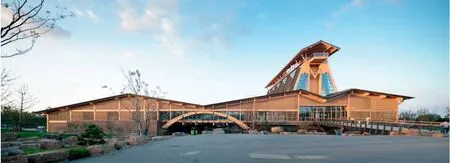
6 外景 Exterior view
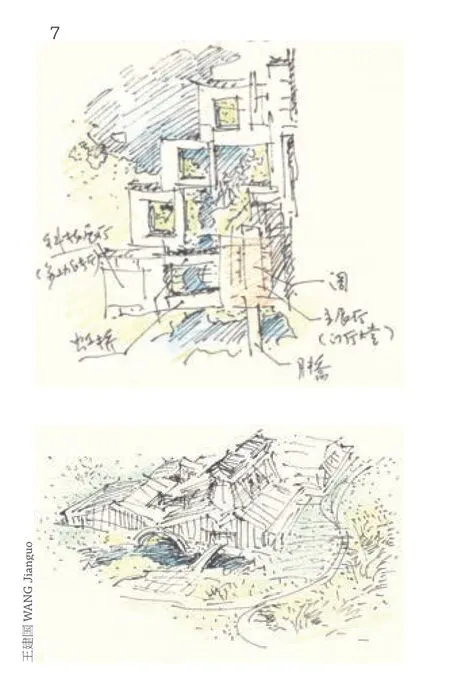
7 草图 Sketch

8 立面 Elevation
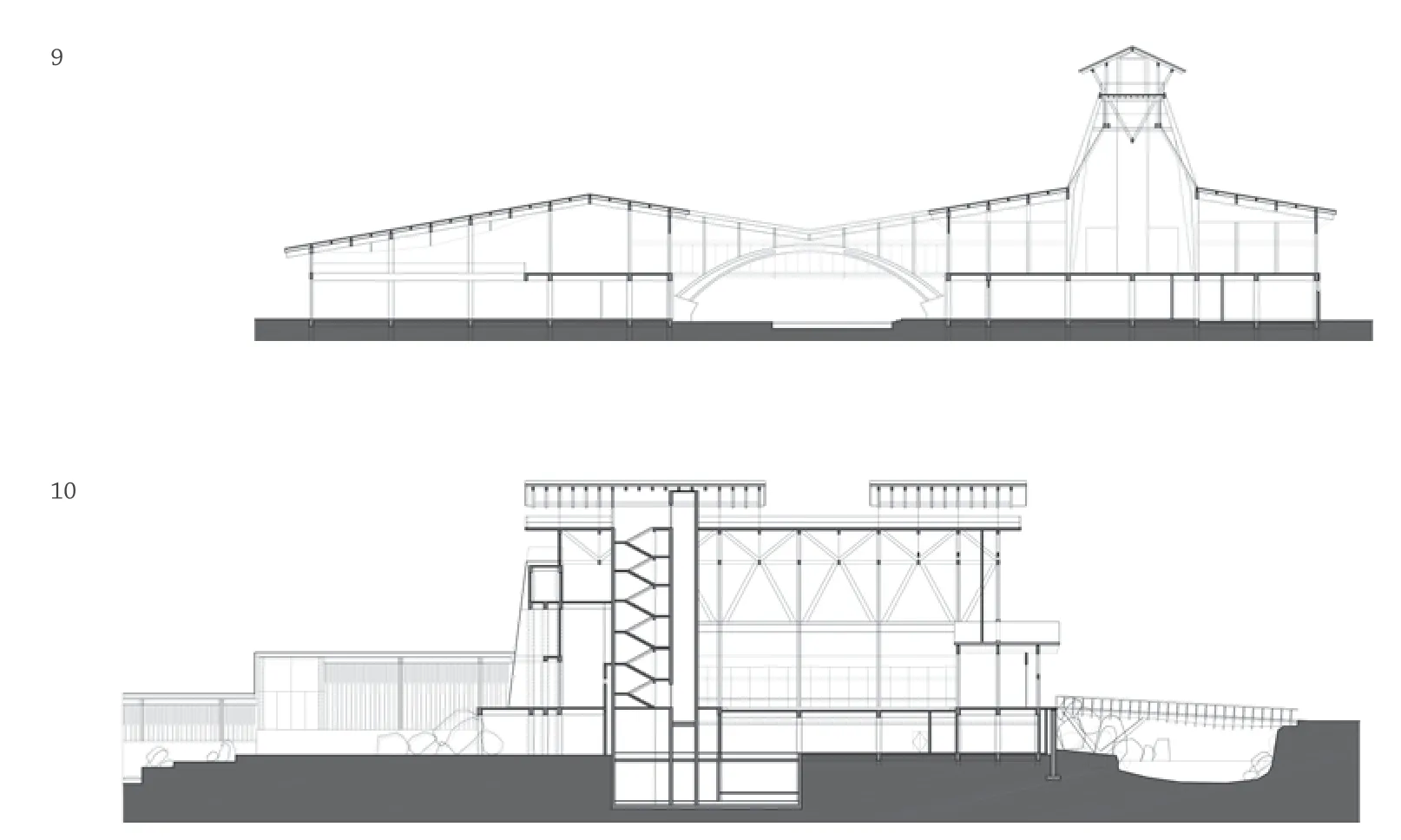
9.10 剖面 Sections
Jury Statement
The building innovatively employs the modern wood structure system.The Technology Exhibition Hall is the first cross-string timber beam structure in China,while the Lounge Bridge utilises a tie-rod arch timber structure.Moreover,it is also the largest timber structure in China in terms of storey height.The structure is integrated into the architecture,allowing the building to achieve its beauty.The project breaks up the whole into parts to dissolve the large building volume,forming a courtyard layout.In addition to carrying out the modern functions,it actively inherits the Chinese architectural context and forms the appearance accordingly,skilfully meeting the functional requirements through the transformation of traditional buildings.Furthermore,it realises the basic natural ventilation of the exhibition space to achieve the goal of passive energy saving.The building attaches importance to the entire life cycle of use,and gives full consideration to the reutilisation of the building after the Expo.
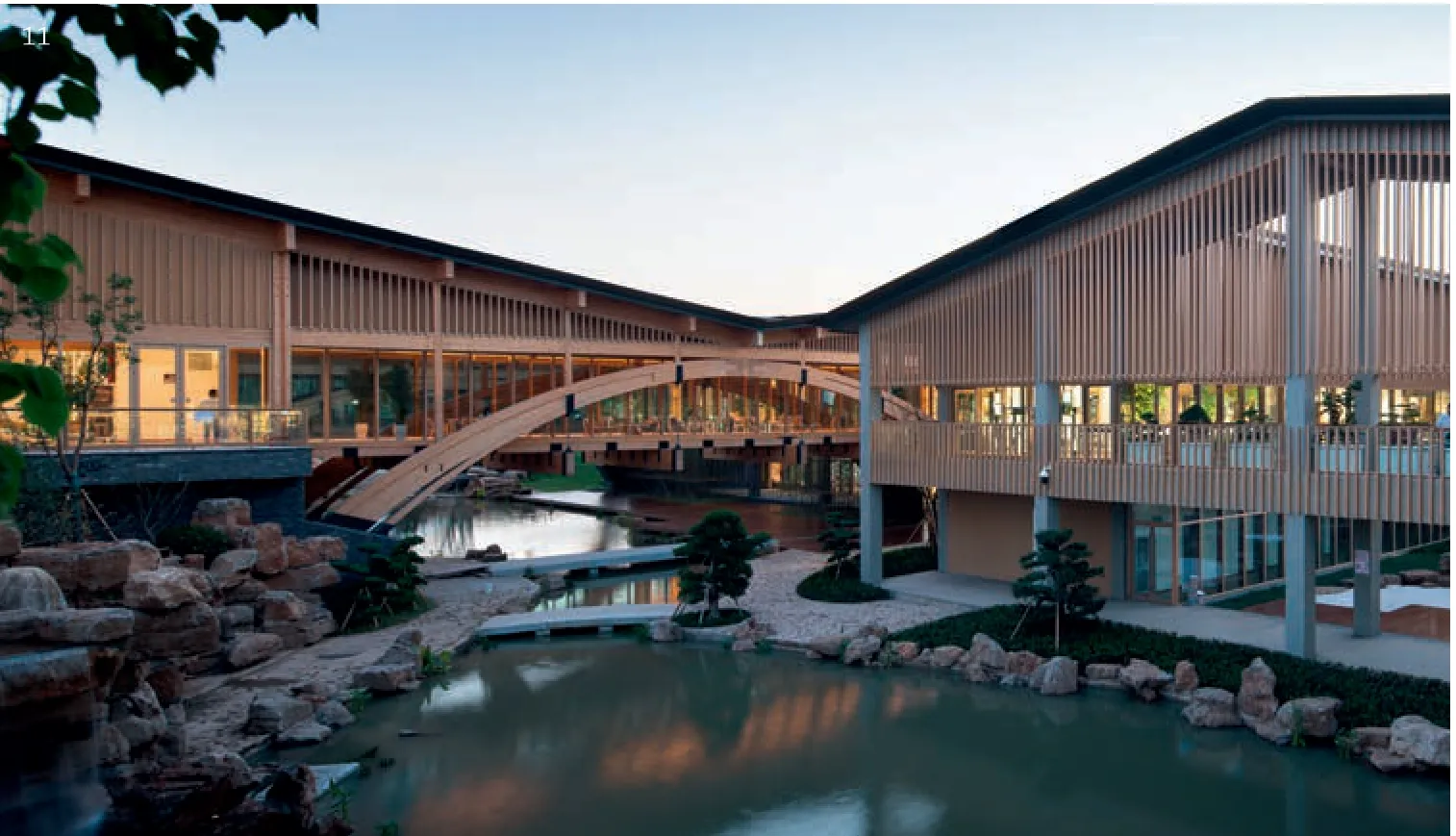
11 水庭 Water garden
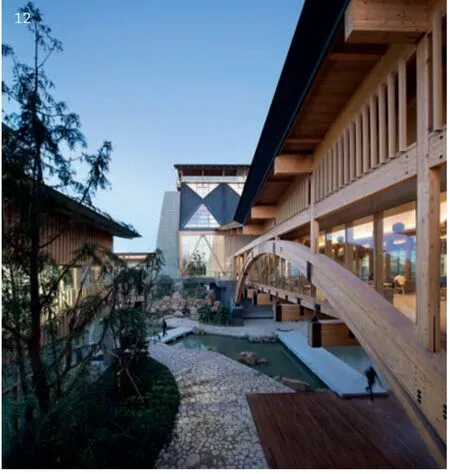
12 外景 Exterior view
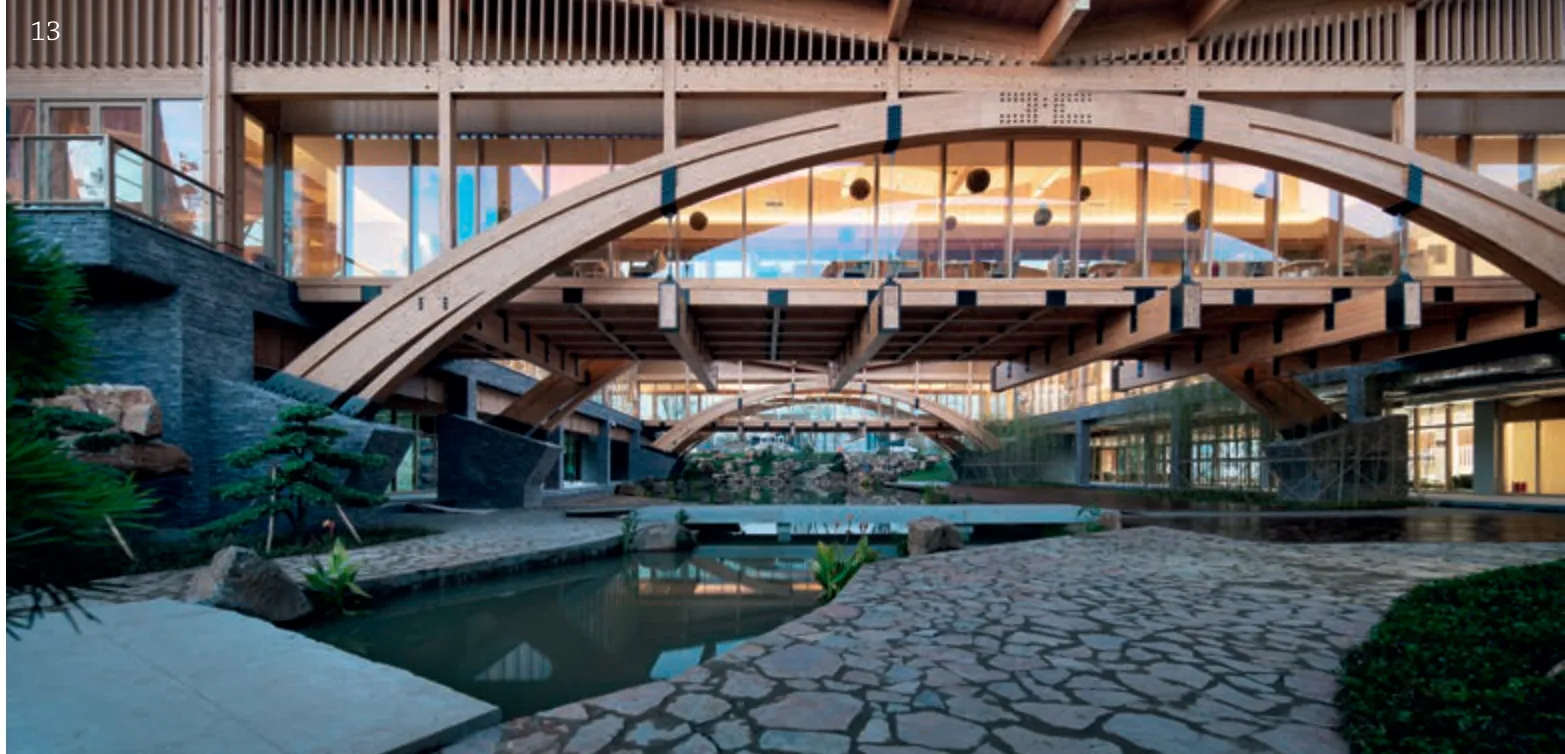
13 虹桥视景 Lounge bridge
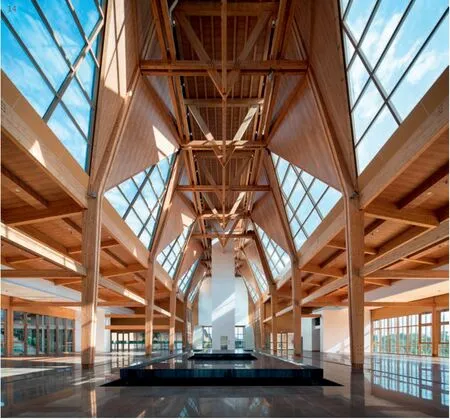
14 内景 Interior view

